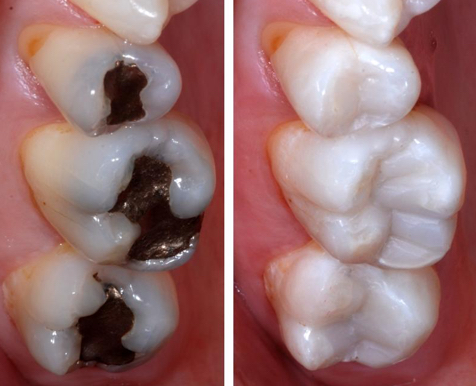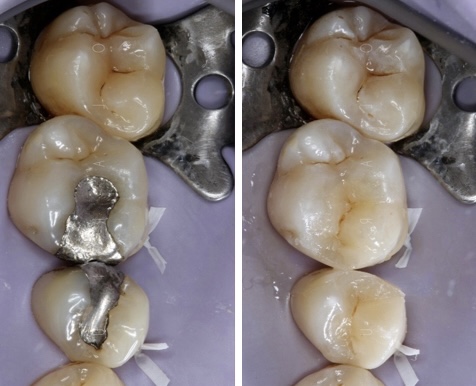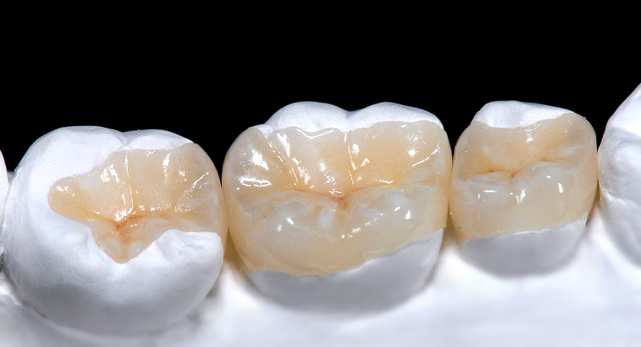Fillings
Dental and prosthetic restoration
Aesthetic filling (white filling, composite/glass ionomer filling)
Nowadays it is generally accepted that the amalgam filling that has been in use for many decades, is out of date. At our practice, we use a range of materials chosen according to the purpose and the size of the filling, in colour always matching the tooth. After the removal of the cavity, the gap is filled with a material which, in terms of its elasticity and resistance to wear, is very similar to the original material of the tooth. This allows us to restore the tooth as closely as possible to the original in appearance and function.


Inserts (Inlay, Onlay, Overlay)
A well-made aesthetic filling created from the best material is the basic pillar of modern dentistry, and will fulfil its duty for a long time. Why, then, would we need to think about changing fillings? One reason is that the various ingredients of composite white material will undergo different degrees of shrinking as a result of long-term exposure to light. Due to this shrinkage, the edge of the filling may end up diverging from the tooth, potentially allowing secondary decay. It is hard to say how long this process might take. It depends on the quality of the precision of medical work, the patient’s oral hygiene and their general susceptibility to tooth decay. On average a “white” filling should function well for 5-7 years.
The following symptoms can be warning signs that it is time for a change: sensitivity to sweets, cold, discoloured filling. In this case, we can solve the problem by removing the old filling, cleaning the cavity and making a new one. This will always result in the loss of tooth material, so the cavity will become deeper, more extensive with time. An average person who got their fillings as young adults should have them changed at least 4 to 5 times during their life to ensure that the repaired tooth will no longer decay.
There is a way to preserve the tooth permanently and quit changing of the filling, and that is the use of inlays, though this is, in fact, not a new technology at all.
This technique has been in use since the heroic age of dentistry and the material used was gold. The dentist shapes the cavity in the tooth according to well-defined principles, and afterwards a precise impression is taken. The technician prepares the filling, which is inserted into the tooth during the next treatment. After this, shrinkage will not occur, therefore the chances of secondary decay are minimized. With proper hygienic care of the tooth, there is no need to renew the filling ever again. Modern technology now allows the use of not only gold but also tooth-coloured material. This can be used to restore a tooth in a way invisible to the untrained eye. Another huge advantage is that it is the only reliable, long-term method of restoring severely damaged teeth by preserving as many intact teeth as possible.
The most outstanding inserts of aesthetic value can be made from composites with a high ceramic content or pressed ceramics.
